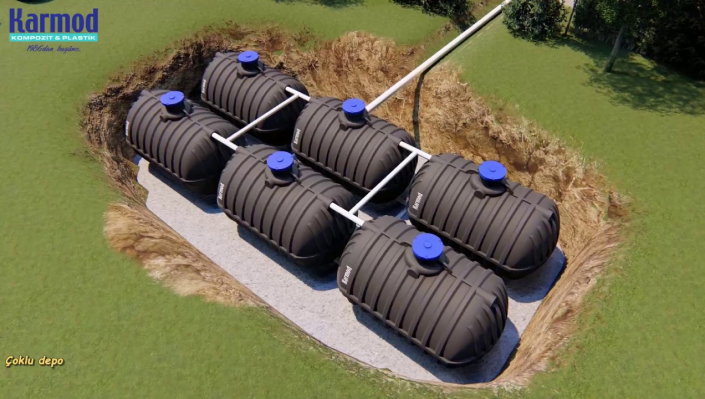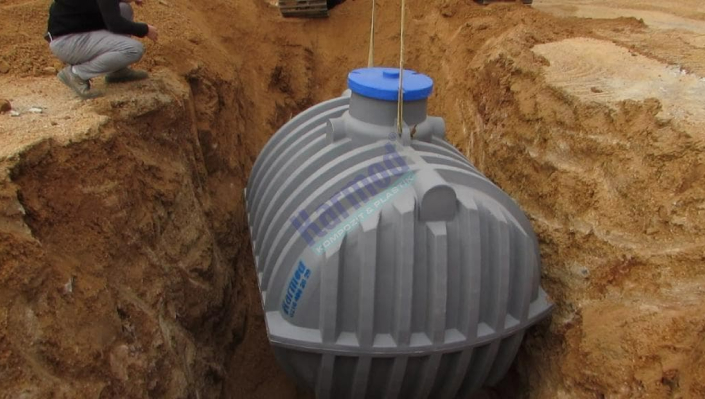We see tanks around us a lot lately, but there may be tanks that we cannot see around us. The water tank we cannot see is underground tanks. Since these tanks are underground by nature, most of the time only the lid and throat are visible. For those who do not know, this image does not create a tank atmosphere.
Subsoil tanks are a tank that can be used both in the industrial field and in the individual field. While pesticides are mostly stored in the individual area, it is sometimes used as a septic tank. In the industrial field, it is also used to ensure the safety of valuable chemical or food contents or to keep them cool.
In general, the main purpose of storage products is to store a content, whether food or chemical, to protect it from external factors or seasonal conditions, to transport it if desired, and to evacuate and use the content when needed.

An underground tank has no significant impact on the quality of drinking water. The quality of the water is determined by its mineral and bacteria levels. However, when it comes to drinking water, it is always recommended to filter the water in your tank. It is possible to measure the quality of your water thanks to some devices for measuring the quality of water. The main purpose of the tanks is to protect only the clean water that you store. In the case of storing sensitive contents such as drinking water, it is recommended that you clean your tank or have it cleaned after each use.
What are the Types of Subsoil Water Tanks?
In general, tanks are produced with three different raw materials: polyethylene, polyester, and stainless steel. Underground tanks are usually produced with polyethylene and polyester raw materials. This is partly because they are more affordable and partly because they can be buried under the ground more easily.
Each raw material has some unique advantages. However, the most important advantage of underground tanks over other tanks is that the content is materially and morally safe because it is under the ground. For example, a septic tank smells very bad, but since it is under the ground, you can use the space left on the surface of the earth and you will not encounter a bad odor if the lid is not opened. For more detailed information, it is necessary to write the general features of both tanks.

Polyethylene Underground Water Tank Features
Polyethylene can be used as the raw material of every product in contact with food. The biggest reason for this is that it is suitable for food. The food compatibility of this raw material is at the international level. This means that every product in contact with food in every country around the world can be produced with polyethylene.
Polyethylene underground tanks are the most suitable tanks for food storage. It can keep contents such as water a few degrees cooler than above ground tanks. Polyethylene has harmful ray insulation as a raw material, but polyethylene underground water tank models also have an extra soil insulation. Production types are monoblock. In the form of monoblock production, tanks are produced in one piece by pouring polyethylene into molds. In this way, there are no joints or rivets on the tank. Thus, it becomes more robust and long-lasting.
Polyester Underground Water Tank Features
Polyester tanks stand out with their chemical resistance. Although they are essentially produced using glass fiber and polyester resin, isophthalic and epoxy-based vinylester resin is used in production to ensure chemical resistance. Thanks to this production method, it has the advantage of on-site assembly.
Polyester tanks are generally used for storing chemicals such as diesel oil and pesticides. The operating temperature is up to the hottest +60 degrees. Suitable for use as a septic tank.
Common Features
Underground tanks have their own advantages as well as common features. Some of these features are as follows; all storage products have a two-year warranty. This warranty covers manufacturing defects. Although it is difficult for underground tanks to be damaged or punctured, they can be repaired when such a situation occurs. However, underground tanks are a little more difficult to repair than other tanks. You can meet your subsequent tank volume needs by purchasing a new tank. Parallel connection is made between the new tank you buy and your old tank. Perhaps the most important feature of these tanks is ultraviolet ray resistance. While there is a raw material-specific insulation, there is also an extra soil insulation.
Thus, we have written about the general features of underground tanks and their quality for drinking water. If you want to have one of the underground or above ground tanks, you can contact our customer representatives and get an offer.


 EN
EN
 DE
DE
 FR
FR
 IT
IT
 ES
ES
 PT
PT
 RU
RU
 AR
AR
 BG
BG
 SR
SR
 GR
GR
 SQ
SQ
 RO
RO
 PL
PL
 HU
HU
 CZ
CZ
 HR
HR
 AZ
AZ
 GE
GE
 AM
AM
 IL
IL